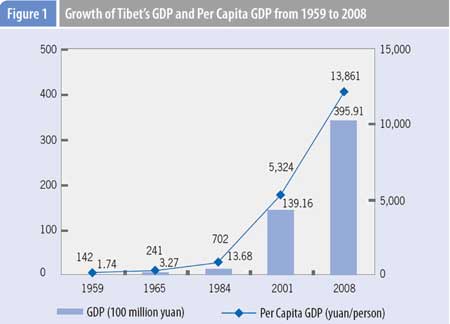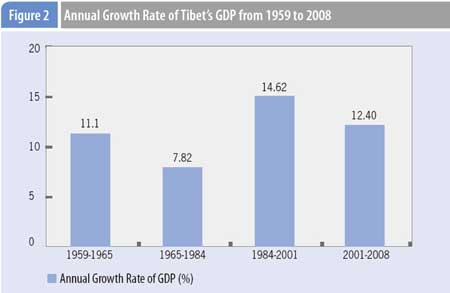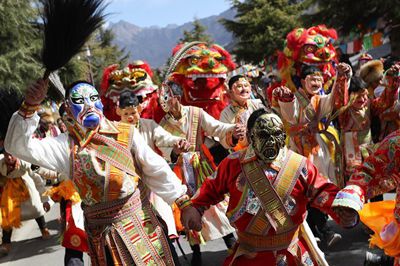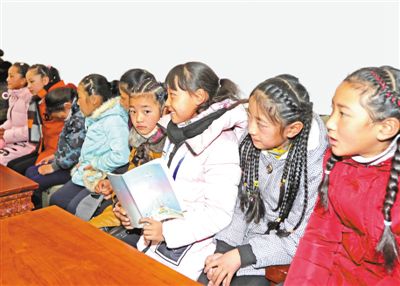|
II. Human Development: Goal of Economic Development Promoting human development is one of the main objectives of economic development. The studies of Tibet's human development index and related issues reveal that major indicators of the human development index, including population growth rate, GDP per capita, average life expectancy and average education level, of Tibetan residents, especially those of the Tibetan ethnic group, are experiencing revolutionary changes along with the rapid development of the local economy. Therefore, Tibet's development is characterized by improved quality of life and guaranteed rights and interests, as well as accumulated social wealth. III. Sustainable Development: Development Rooted in Environmental Protection and Green Industry As Tibet's economy is developing rapidly, the government is making increasing legal, administrative and financial efforts to protect the environment and improve the ecology of Tibet, and giving priority to ecological and environmentally-friendly industries in the process of framing industrial development policies and guiding the market. In China, Tibet is the place nearest to the sky and furthest away from pollution. IV. Government and Market: Encouragement and Promotion for Development As Tibet is undergoing a reform toward a market economy, the market is playing an increasingly important role in resource allocation, especially in the price system. In view of the intrinsically unbalanced resource allocation of the market mechanism in Tibet's farming and pastoral areas, and the comparative backwardness of those areas, as well as the low competitiveness of farmers and herdsmen, the local government is mobilizing its administrative resources, financial support from the central government in particular, to rectify shortcomings in the market and foster the development of the farming and pastoral areas and the people who live there. While the changes in the cities and towns throughout Tibet during the preliminary and intermediate stages of reform and opening-up remain fresh in our memory, the development of the farming and pastoral areas in recent years is even more impressive. V. Difficulties and Challenges: Obstacles to Development Since the democratic reform in 1959, and especially since the adoption of the reform and opening-up policy in 1978, Tibet has witnessed remarkable economic development. Nonetheless, for various reasons, many challenges remain, including high cost of economic and social development, underdeveloped market, unbalanced economic and social development in urban and rural areas, low market competitiveness of farmers and herdsmen, and underdeveloped human capital. These are the long-term challenges that Tibet has to address in order to achieve sound economic development. VI. Conclusion: Prospects for Growth and Development Although Tibet's society and economy were affected by the March14 Incident in 2008, the impact on most local industries was limited, except for temporary difficulties for tourism in Tibet. In the next few years, Tibet's economy is expected to maintain sound and rapid development in virtue of favorable factors such as increasing investment and transfer payments from the central government, rising income level of farmers and herdsmen, and burgeoning consumption by local residents. I. Growth and Change: Basis of Development
Economic development is a process of creating and accumulating wealth. In economics, Gross Domestic Product (GDP) is a core indicator measuring the degree to which a country or region creates and accumulates wealth. It is also widely used to measure a country's or region's economic growth, or even the level of social development. 1. Growth of Economic Aggregate and Stimulation of Investment To discuss the topic of growth and development, we first deal with the basis and conditions of development. In 2008, the GDP of Tibet was 39.591 billion yuan, and the per capita GDP reached 13,861 yuan. Although the per capita GDP in Tibet was much less than the national average of 22,698 yuan, we should take into account the fact that the economic growth of Tibet started from a very low level: At the time of the 1959 democratic reform, the total output value of Tibet was only 174 million yuan, and the per capita GDP was only 142 yuan.[1] In reviewing the development history of the Tibet Autonomous Region over the past half-century, we can see that its economic development has experienced three main historical stages to achieve the growth of economic aggregate (see Figs. 1 and 2).
-- 1959-1965: From the democratic reform to the formal establishment of the People's Government of the Tibet Autonomous Region |
- Home
- News |Tibet |Exclusive |China |World |Other Tibetan-Inhabited Area |Tibet through the Eyes of Foreigners |Related News
- Documents |White Papers |Others
- Photo |Politics |Economy & Society |Culture & Religion |Human & Nature |Beautiful Tibet |Other Tibetan-Inhabited Area |Exchanges |Related
- Video |News |Documentary |Micro-Video |Entertainment
- Art
- Tourism
- In Focus
- About Tibet








